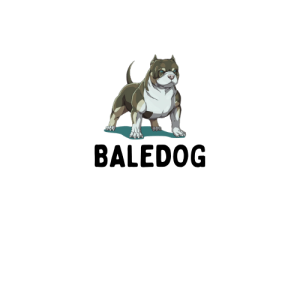
Key Takeaways:
Feline Vulnerability: The Unexpected Leap of Avian Influenza
In a startling turn of events, the world of veterinary medicine and public health has been shaken by an unprecedented development. A highly pathogenic strain of avian influenza, commonly known as bird flu, has made an alarming jump to our feline companions. This unexpected mutation has pet owners on high alert, scrambling for information to protect their beloved cats from this emerging threat.
The news of this cross-species transmission has sent ripples through communities, leaving many wondering about the safety of their furry friends. As cat owners, we’ve always known our pets to be resilient and independent, but this new danger puts them in an unfamiliar position of vulnerability. It’s a wake-up call that demands our immediate attention and action to safeguard not only our cats but potentially our own health as well.
Understanding the Mutation: A New Threat Emerges
The bird flu virus, scientifically termed H5N1, has long been a concern in the poultry industry and among wild bird populations. However, its recent genetic shift has enabled it to infect mammals more efficiently, with cats being particularly susceptible. This mutation represents a significant leap in the virus’s ability to adapt and spread, raising red flags for epidemiologists and veterinarians alike.
Experts believe that this adaptation occurred through a series of genetic changes that allowed the virus to better bind to receptors in mammalian respiratory tracts. This development is not just a concern for our feline friends; it also highlights the potential for further mutations that could affect a broader range of species, including humans.
Recognizing the Signs: What Cat Owners Should Watch For
As responsible pet owners, it’s crucial to be vigilant and recognize the symptoms of this mutated bird flu in cats. The early signs can be subtle but may rapidly progress to more severe symptoms. Here’s what to look out for:
Early Symptoms:
- Lethargy or unusual tiredness
- Loss of appetite
- Mild coughing or sneezing
Advanced Symptoms:
- Difficulty breathing or rapid breathing
- High fever
- Discharge from eyes or nose
- Sudden behavior changes or neurological symptoms
If you notice any of these symptoms in your cat, particularly if they have been outdoors or in contact with birds, it’s imperative to seek veterinary care immediately. Early detection and treatment can be life-saving for your feline companion.
Preventive Measures: Shielding Your Cat from Infection
While the situation may seem dire, there are several steps cat owners can take to minimize the risk of infection:
1. Keep Cats Indoors
The most effective way to protect your cat is to keep them inside. This prevents contact with potentially infected birds or contaminated environments.
2. Maintain Strict Hygiene
Regularly clean and disinfect your cat’s living areas, food bowls, and litter boxes. Use pet-safe disinfectants and wash your hands thoroughly after handling your cat or their belongings.
3. Monitor Outdoor Access
If your cat must go outside, supervise their time and limit their exposure to areas where wild birds congregate. Consider creating a secure outdoor enclosure or “catio” to provide safe outdoor experiences.
4. Be Cautious with Food
Avoid feeding your cat raw meat or eggs, as these could potentially carry the virus. Stick to commercially prepared cat foods or thoroughly cooked meats.
5. Stay Informed
Keep up-to-date with local health advisories and follow guidelines provided by veterinary authorities regarding the spread of the virus in your area.
The Broader Impact: Public Health Concerns
The mutation of the bird flu virus to infect cats isn’t just a concern for pet owners; it has broader implications for public health. While there have been no reported cases of cat-to-human transmission of this particular strain, the potential for further mutations that could bridge this gap is a source of concern for health officials.
This situation underscores the interconnectedness of animal and human health, a concept known as “One Health.” It highlights the need for collaboration between veterinarians, doctors, and public health experts to monitor and address zoonotic diseases that can cross species barriers.
What Veterinary Experts Are Saying
Veterinary professionals are urging cat owners not to panic but to remain vigilant. They emphasize the importance of routine check-ups and vaccinations to maintain overall feline health, which can help cats better resist infections. Some experts are also calling for increased research into developing vaccines specifically targeting this new strain of influenza in cats.
Looking Ahead: Research and Preparedness
As the scientific community races to understand more about this mutated virus, research efforts are being ramped up. Studies are underway to develop better diagnostic tests, explore potential treatments, and assess the long-term impact on feline populations. This research is crucial not only for protecting our pets but also for preparing for potential future pandemics that could affect multiple species.
Conclusion
The spread of this mutated bird flu to cats serves as a stark reminder of the ever-evolving nature of viruses and the challenges they pose to both animal and human health. As pet owners, our role in protecting our feline companions has never been more critical. By staying informed, taking preventive measures, and working closely with veterinary professionals, we can help safeguard our cats from this new threat.
While the situation is undoubtedly concerning, it’s important to remember that knowledge and proactive care are our best defenses. By remaining vigilant and responsive, we can continue to provide safe and loving homes for our feline friends, even in the face of new health challenges. Together, pet owners, veterinarians, and public health officials can work towards mitigating the impact of this mutated virus and protecting the health of all species involved.
Frequently Asked Questions
Source: baledog.com


